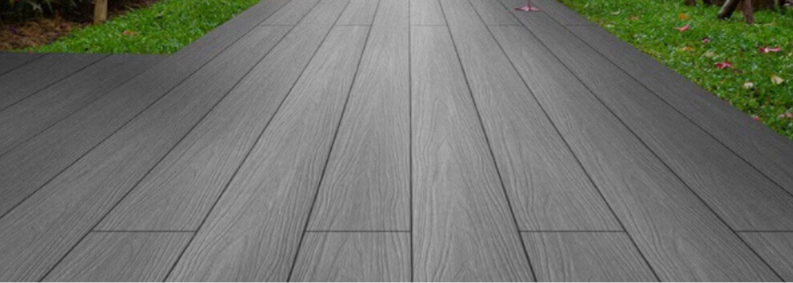Eco-Friendly WPC Decking Solutions for Residential and Commercial Landscaping

With the continuous advancement of high-tech materials, wood-plastic composite (WPC) materials have been increasingly developed and applied across various engineering projects. Today, the most common applications of plastic wood products are in outdoor garden landscapes, residential areas, public parks, and harbor facilities.
The popularity of WPC products for outdoor use is largely due to their dual properties of plastic and wood, offering strong corrosion resistance, durability, and low maintenance. However, their longevity in outdoor environments is influenced by several factors:
Physical factors: Prolonged exposure to UV radiation and natural light can accelerate material oxidation.
Chemical factors: Moisture and oxygen may cause slow chemical decomposition in certain formulations.
Biological factors: The growth and decay of surrounding plants can indirectly affect WPC surfaces.
Although WPC materials have been widely used overseas for many years, their introduction in China is relatively recent. Recent advancements in PVC powder formulations, processing techniques, and extrusion equipment have enabled domestic manufacturers to produce high-quality wood-plastic flooring with superior performance.
What is Wood-Plastic Composite (WPC)?
WPC is a new type of composite material made by combining thermoplastics like polyethylene, polypropylene, or polyvinyl chloride with more than 50% natural fibers such as wood powder, rice husks, or straw. These materials are processed through extrusion, molding, or injection techniques to produce boards, panels, or flooring.
WPC is widely used in building materials, furniture, and logistics packaging due to its excellent physical and aesthetic properties.
Key Features of WPC Flooring
Waterproof and moisture-proof: Unlike traditional wood, WPC does not swell, rot, or deform in humid or wet conditions, making it ideal for outdoor decks, garden pathways, and villa terraces.
Pest-resistant: WPC naturally resists termites and other wood-boring insects, significantly extending service life.
Customizable aesthetics: Available in a wide range of colors and wood-like textures, WPC can be shaped to meet unique design requirements.
Environmentally friendly: Non-toxic, low formaldehyde content (<0.2%), and fully recyclable, meeting European environmental standards.
Fire resistance: WPC can achieve B1-level flame retardancy without producing toxic gases in case of fire.
Durability and low maintenance: WPC boards do not crack, warp, or swell, require minimal cleaning, and have a lifespan of 20–30 years under normal conditions.
Energy-saving: Its sound absorption and insulation properties can reduce indoor energy consumption by up to 30%.
Engineering Case Studies
European Residential Garden Deck
In the Netherlands, a private villa installed WPC decking in the backyard to create a low-maintenance outdoor lounge area. Despite frequent rain and cold winters, the decking has maintained its color and structural integrity for over eight years without any repairs.
Public Park Boardwalk, Germany
A city park in Hamburg replaced traditional timber boardwalks with WPC planks along a riverside promenade. The new boards resisted moisture and mold caused by the damp environment, while providing a safer, non-slip surface for pedestrians.
Harbor Platform Installation, USA
A coastal harbor in California utilized WPC materials for docks and piers. The composite boards resisted corrosion from saltwater and UV exposure, significantly reducing maintenance costs compared to conventional wood.
School Outdoor Learning Area, UK
In a primary school in London, WPC flooring was used for an outdoor classroom and playground. The boards are safe for children, easy to clean, and maintain their aesthetic appearance despite heavy foot traffic and wet weather conditions.
Installation and Maintenance
WPC boards are designed for easy installation with basic tools. They do not require complicated construction technology, which reduces labor costs and installation time. Cleaning is simple, and the material does not require regular painting, polishing, or sealing.
SEO-Friendly Summary for Web
Wood-plastic composite (WPC) decking and outdoor wood-plastic flooring are becoming the preferred choice for modern garden landscaping, residential terraces, and public infrastructure projects. With its natural wood-like appearance, waterproof and pest-resistant properties, WPC is ideal for outdoor platforms, garden pathways, villa decks, and school playgrounds.
The material is durable, eco-friendly, and low-maintenance, providing long-term performance in harsh outdoor conditions. By choosing WPC outdoor decking and flooring, architects and homeowners can combine aesthetic beauty with sustainable and cost-effective solutions, making it a top choice for high-quality outdoor construction projects.


